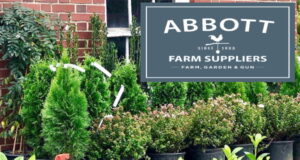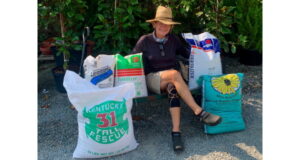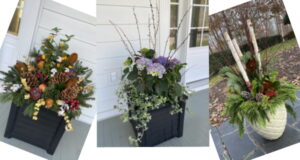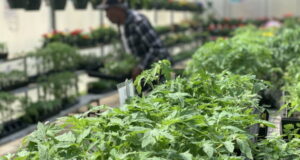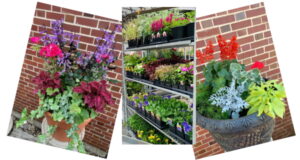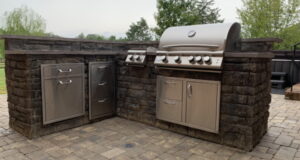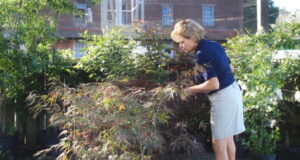By Bart Streb
 As a child I would visit Pop (my grandfather) in his mountain home on Easter. April in the mountains is a time for preparing the garden soil and planting cool season crops. My memories of working that Appalachian clay are not laborious but wondrous. An acre of freshly plowed soil to investigate, seeds to plant, horse manure to spread and just hanging out with Pop. The magic happened when I would return for a 4th of July visit. The bare cold ground I left in April was heaping with produce! What I missed out on was the weeding and watering and tending of the garden to get it to that point. Pop loved it and shared his bounty with all who were lucky enough to be in his benevolent reach. It was his Labor of Love.
As a child I would visit Pop (my grandfather) in his mountain home on Easter. April in the mountains is a time for preparing the garden soil and planting cool season crops. My memories of working that Appalachian clay are not laborious but wondrous. An acre of freshly plowed soil to investigate, seeds to plant, horse manure to spread and just hanging out with Pop. The magic happened when I would return for a 4th of July visit. The bare cold ground I left in April was heaping with produce! What I missed out on was the weeding and watering and tending of the garden to get it to that point. Pop loved it and shared his bounty with all who were lucky enough to be in his benevolent reach. It was his Labor of Love.
Fast forward a few years, and as a pre-teen, I was ready to chop down ivy, dig up some sandy, loamy downtown Wilmington, NC soil and have my own garden. What a back breaking adventure! I managed to carve out a 10x12 spot behind a dilapidated garage complete with a non-working bathroom that looked more like a crypt (but fascinating to a young boy for some reason). My "crop" was less than prolific. I knew little about soil conditioning and other tips and tricks that Pop failed to mention, or I failed to hear. I managed a hand full of beans, a few radishes and some lettuce. My meager production was far from the Appalachian garden magic I had experienced.
My most proud gardening season in the coastal plain came when we lived at Wrightsville Beach and I managed to plant a garden in a sand dune behind our house. I still knew little about soil conditioning, fertilization and other nuances of horticulture that produce viable results. But there it was, a garden in the hot sun and baking sand! I knew the sand needed amending so I collected all the grass clippings and other tidbits of kitchen scraps I could come up with. Working them in to the soil, it made sense that this was a good thing for root structure and the tomatoes were the proof in the pudding. The seashells where a great source of calcium and tomatoes love it. Without it you get the dreaded end rot that can send a plant to the compost pile quickly. My soil was so dry and the weather so hot I had to water twice a day. So, the Love Level was suppressed by a larger Labor output.
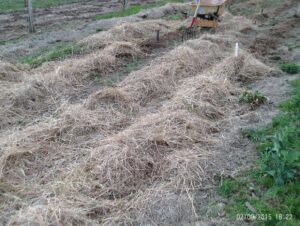 My lust for gardening (sounds weird but hey) continued into my young adulthood. Days of renting tillers, buying them, rebuilding and eventually throwing them out ensued. I was a digger. I thought that is how you garden because Pop had a big red Farmall 140 and plowed that acre in the valley. He had several implements with the sole purpose of tilling and turning soil over and over, constantly exposing it to the harsh conditions. What I did not know at the time was there is a better way. A total 180 degrees from conventional farming/gardening, and I am here to share it.
My lust for gardening (sounds weird but hey) continued into my young adulthood. Days of renting tillers, buying them, rebuilding and eventually throwing them out ensued. I was a digger. I thought that is how you garden because Pop had a big red Farmall 140 and plowed that acre in the valley. He had several implements with the sole purpose of tilling and turning soil over and over, constantly exposing it to the harsh conditions. What I did not know at the time was there is a better way. A total 180 degrees from conventional farming/gardening, and I am here to share it.
No till gardening came onto my scene about 5 years ago. I studied more gardening techniques and went through Master Gardener Training, learning about soil conditioning, composition and profile. Online forums discussed how to take some of the work out of gardening and a new path to follow in soil building. Instead of digging down, you add up (think of making a lasagna, or at least take a peek at one next time it is plated). I have learned that tilling and flipping soil actually destroys important microbes that are beneficial. Not to mention the cost of renting or buying/maintaining equipment. When soil is transformed into bare ground, millions of seeds per square yard are exposed and voila! Add some summer sun, a few rains and you have a nice carpet of weeds choking out your plants. Ever notice how lush your summer weedbed is? Dormant seeds lay waiting for you to expose them when soil is flipped.
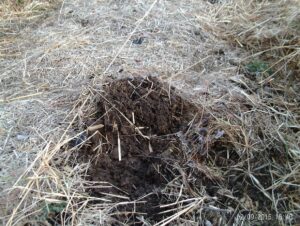 I dabbled in raised bed/no till gardening and the results were great. The green beans and chard really took well to it. I used old leaves as mulch because that is what we had at the time. Now we have about 10 acres of pasture I mow and rake with a lawn sweeper (my small-scale hay maker) to use. I broke the soil originally in my 25x70 foot plot as it was pretty compacted, but since then, I am making a lasagna garden. Cleaning out the chicken and rabbit pens this spring produced some quality nutrition that I lay out in rows. This was covered with hay. I won't have the weed carpet that bare soil produces and watering will be significantly reduced this summer. Summer suns do not dry out and crack the soil like before. Last year it was too wet and I had to replant some okra but other than that, the plants thrived. The weeds that tried to grow through the mulch were easy to pull. The soil stays nice and cool, doesn't compact and I am sold on this style of gardening. Each year I repeat the process, and the soil under the rows is nice and fertile as the microbes break down the previous year’s mulch.
I dabbled in raised bed/no till gardening and the results were great. The green beans and chard really took well to it. I used old leaves as mulch because that is what we had at the time. Now we have about 10 acres of pasture I mow and rake with a lawn sweeper (my small-scale hay maker) to use. I broke the soil originally in my 25x70 foot plot as it was pretty compacted, but since then, I am making a lasagna garden. Cleaning out the chicken and rabbit pens this spring produced some quality nutrition that I lay out in rows. This was covered with hay. I won't have the weed carpet that bare soil produces and watering will be significantly reduced this summer. Summer suns do not dry out and crack the soil like before. Last year it was too wet and I had to replant some okra but other than that, the plants thrived. The weeds that tried to grow through the mulch were easy to pull. The soil stays nice and cool, doesn't compact and I am sold on this style of gardening. Each year I repeat the process, and the soil under the rows is nice and fertile as the microbes break down the previous year’s mulch.
If you want to take some Labor out of gardening and replace it with some Love, then try it. You can research No Till, Lasagna, Wood Chip Gardening and learn more. Think of ways of applying it to your garden. What raw resources do you have (compost, horse neighbors, cows, kitchen scraps, leaves, hay or Home Depot)? Come up with a plan and start building your garden from the bottom up. Old dogs can be taught new tricks and I am barking up the right tree on this!
Bart Streb is owner of Real Estate Repair and Restoration providing repairs and maintenance to Hyco and Mayo Lake area homes. https://www.linkedin.com/in/bartstreb | (919) 971-0177 ![]()
 Happy Endings Publications Hyco Lake, River City Area & SoBo Halifax Magazines
Happy Endings Publications Hyco Lake, River City Area & SoBo Halifax Magazines
